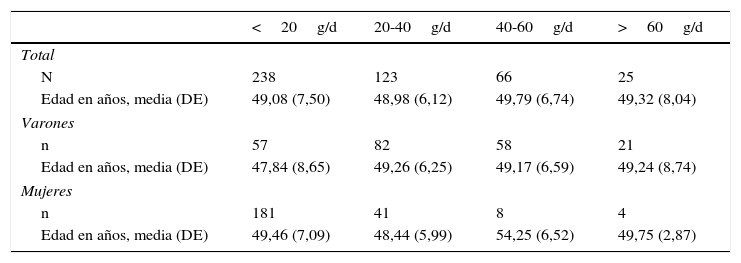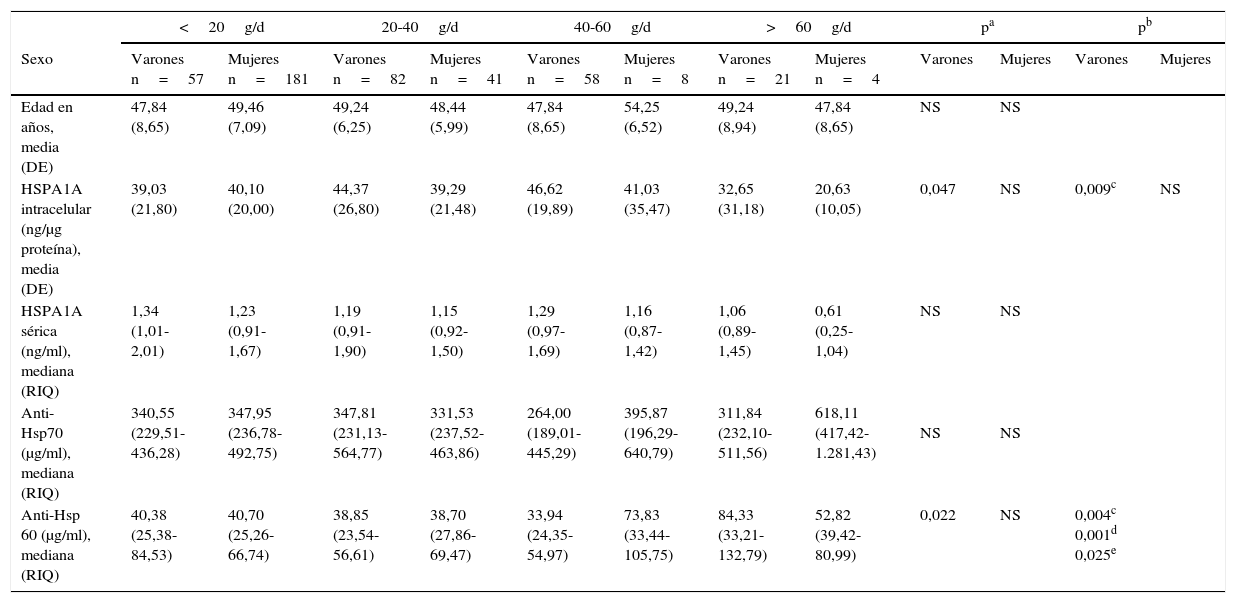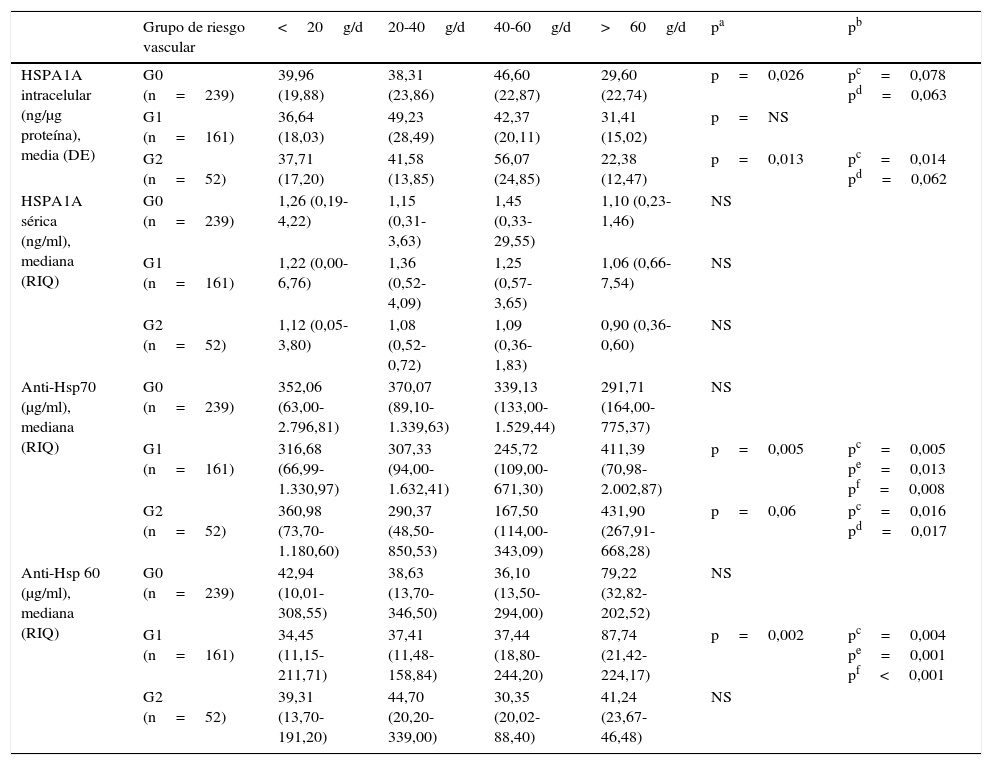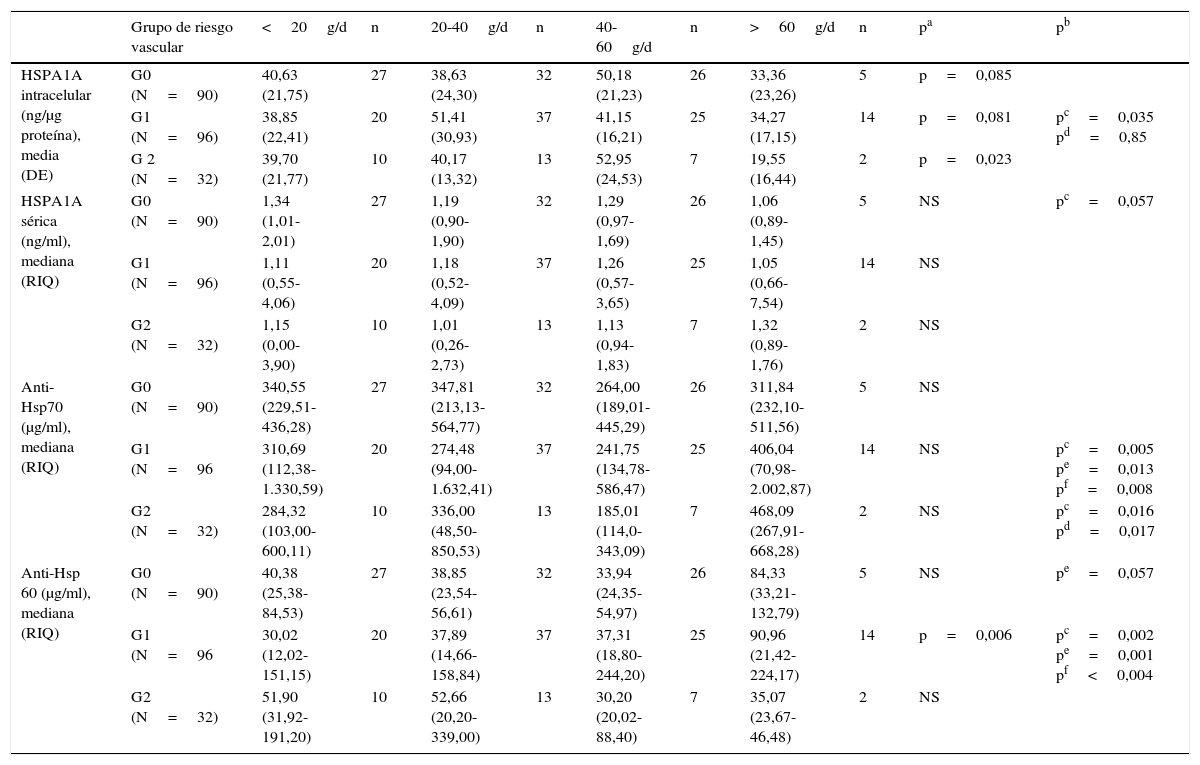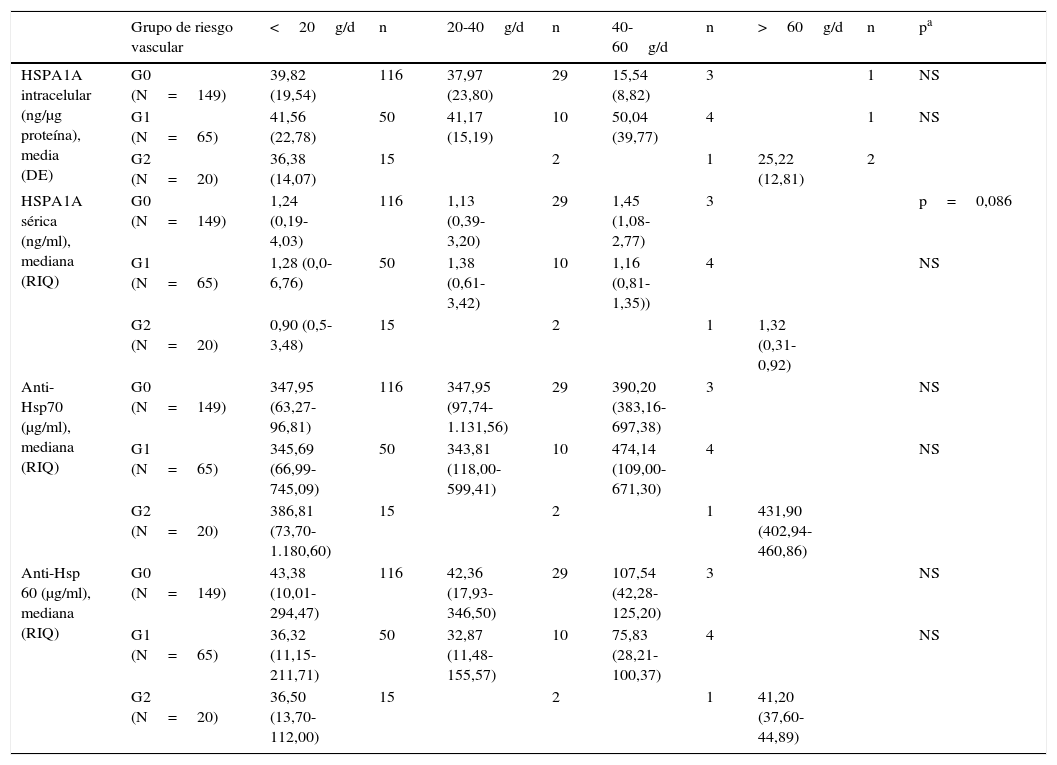Estudiar si el efecto cardioprotector del consumo regular de alcohol puede explicarse a través de las heat shock proteins (HSP, «proteínas de choque térmico»), dado su papel etiopatogénico en la ateroesclerosis.
Material y métodosEstudio epidemiológico trasversal en 452 sujetos de 40-60 años de ambos sexos. Se realizó la historia clínica incluyendo frecuencia del consumo medio de alcohol y análisis bioquímicos, y se estatificó el grado de riesgo coronario según la Task Force. Se cuantificaron HSPA1A intracelular, HSPA1A y HSPD1 séricas y anti-Hsp70 y anti-Hsp60 por ELISA.
ResultadosDoscientos treinta y ocho (52,7%) sujetos eran abstemios o bebedores de<20g/d de alcohol; 123 (27,2%) bebían 20-40g/d, 66 (14,6%) 40-60g/d y 25>60g/d (5,5%). Doscientos treinta y nueve carecían de factores de riesgo vascular (RV) o tenían un RV<5%; 161 tenían RV moderado (10-20%) y 52 presentaban enfermedad ateroesclerótica instaurada. Los bebedores de 40-60g/d presentaron máximas concentraciones de HSPA1A intracelular, no significativas en RV moderado. HSPA1A sérica no presentó diferencias y HSPD1 fue indetectable. Los bebedores de 40-60g/d y RV moderado o enfermedad ateroesclerótica presentaron las menores concentraciones de anti-Hsp70. Los anti-Hsp60 fueron máximos en varones bebedores de>60g/d y en mujeres bebedoras de 40-60g/d, especialmente en RV moderado.
ConclusionesEl efecto cardioprotector del consumo de 40-60g/d de alcohol podría deberse, al menos en parte, al incremento de HSPA1A intracelular, potente proteína antiinflamatoria. El consumo excesivo regular de alcohol se asocia a un aumento de anticuerpos anti-Hsp60, estimulantes de citocinas proinflamatorias; ello podría explicar la mortalidad por enfermedad cardiovascular en estos pacientes. Se ha propuesto la aplicación clínica del seguimiento de anticuerpos anti-Hsp en pacientes en riesgo para detectar enfermedad ateroesclerótica.
To study whether the cardioprotective effect of regular alcohol consumption can be explained by the heat shock proteins (HSP), given their pathogenic role in atherosclerosis.
Material and methodsCross-sectional epidemiological study on 452 men and women aged 40-60. Clinical history, epidemiological survey (frequency of average alcohol consumption) and biochemical analysis was performed; Task Force Chart was applied for classification according to the risk of vascular disease. Intracellular HSPA1A, circulating HSPA1A and HSPD1, and anti-Hsp70/anti-Hsp60 antibodies were quantified by ELISA.
ResultsTwo hundred and thirty-eight (52.7%) were abstemious or drank<20g/d of alcohol; 123 (27.2%) drank 20-40g/d, 66 (14.6%) 40-60g/d and 25>60g/d (5.5%). Two hundred and thirty-nine had no vascular risk (VR) factor or a risk<5%, 161 had moderate VR (10-20%) and 52 had established atherosclerotic disease. Drinkers of 40-60g/d showed the highest concentrations of intracellular HSPA1A, which were not significant in subjects with moderate VR. Extracellular HSPA1A didn’t differ and HSPD1 was undetectable. Drinkers of 40-60g/d and moderate VR or atherosclerotic disease presented the lowest concentrations of anti-Hsp70. The highest levels of serum anti-Hsp60 were shown in heavy male drinkers of>60g/d especially in subjects with moderate VR, and female drinkers of 40-60g/d.
ConclusionsThe cardioprotective effect of 40-60g/d of alcohol consumption could be due in part, to increased intracellular HSPA1A, a potent anti-inflammatory protein. Excessive intake of alcohol increases antibodies anti-Hsp60, stimulating proinflammatory cytokines. This fact may explain the mortality from cardiovascular disease in heavy drinkers. The clinical application of antibody anti-Hsps quantification has been proposed in patients at risk in order to detect atherosclerotic disease.
Artículo
Comprando el artículo el PDF del mismo podrá ser descargado
Precio 19,34 €
Comprar ahora






